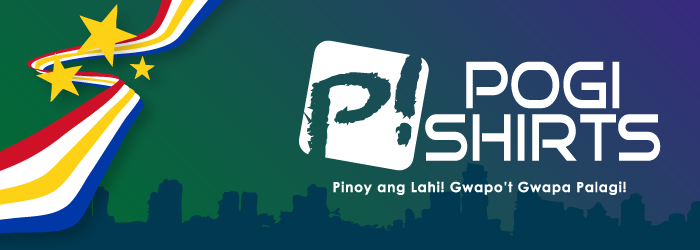Asia's Latin City
This article is taken from Augusto Villalon's weekly article Pride of Place in the Philippine Daily Inquirer published November 24, 2008.
Pride of Place
Asia’s Latin City
By Augusto Villalon
By Augusto Villalon
Philippine Daily Inquirer
MANILA, Philippines - Bienvenidos, buenas dias contigo,” my host said, her eyes lighting up into a radiant smile as I walked into the Zamboanga airport terminal.
It was my first time there, but with a welcome like that, I knew this was one of those special places in the Philippines that was going to be an experience to remember.

Filipinos imagine Zamboanga as the gracious city in the southern tip of Mindanao; a seaside city profuse with flowers whose residents have long been a mix of religions and cultures; an old settlement upgraded by the Spanish conquerors whose fortifications remained long after the city became the leading American colonial stronghold in the far south.
The city is one of the few in the country where heritage survives intact, evidenced in so many historic structures still in use today. Church and mosque spires mark the skyline despite rapid construction of commercial structures that are now beginning to change the traditional low-rise profile of the city.
On weekends, crowds of people picnic and swim on city beaches along the tree-lined boulevards which arc to follow the shoreline. In the foreground of the pristine blue water is Sta. Rosa Island, famous for its pink-sand beaches. Just behind it looms Basilan island, about an hour by boat from Zamboanga.
Chabacano
Zamboanga bills itself as Asia’s Latin City. Absolutely Latino-based is Chabacano, its spoken language, a Spanish-Bisaya patois of “60-percent Español and 40-percent nativo words,” says the city brochure, a living language unique to the place and its people that continues to evolve today by absorbing words from the vocabularies of the different cultural communities who inhabit the city.
Zamboanga’s edge over other Asian cities of Latin heritage—Goa, Malacca, Macau—is language. While those Asian cities may have retained some practices and landmarks of shared Latin heritage, they have pretty much lost their Latin languages.
Chabacano remains the lingua franca uniting the fusion of diverse cultures coexisting in the city for generations. A cultural melting pot better than Zamboanga probably does not exist anywhere else in the Philippines.
.jpg)
Their spoken language is the definite Zamboangueño identifying mark. It perfectly encapsulates the city’s multiculturalism. With a lifestyle as charming as their native language, Zamboanga is enchantingly different from anywhere else in the Philippines.
Enchantingly different is the city center, radiating from the former city wharf with the city hall as its centerpiece, which was originally constructed by the American colonial government in early 20th century as the provincial capitol.
From the ceremonial balcony on its second floor, Mayor Celso Lobregat treated us to a sweeping vista that took in avenues surrounding the Rizal statue among the flowers in the plaza fronting the city hall, where generation after generation of parades and processions must have passed in review beneath dignitaries standing on the balcony.

Plaza Pershing, named in memory of the American Gen. “Black Jack” Pershing, who figured prominently in establishing American colonial rule in Mindanao, is another small plaza close to the city hall.
Although modern construction threatens to engulf Plaza Pershing, heritage trees continue to shade the open area. One example of an early gas-lit lamp (whether it is an original or a reproduction is undetermined) still exists, unused, on one of the plaza walking paths that lead to a pair of round, colonnaded glorietas built in early 20th century.

Architectural gems
Compact and walkable, downtown streets lead to a maze of shops and businesses punctuated by some architectural gems. The Art Deco-style police station, built during the Japanese occupation of Zamboanga in the 1940s, stands out. Another unrecognized gem is the Art Deco Philippine National Bank building, dating back to the ’50s.
On a street leading away from the city hall, with many heritage residences, a total surprise is stumbling upon a plain shop front of Malaysian kopi tiam, a small restaurant serving incredible roti canai and Malay breakfast food.
Outstanding are the houses on this street which maintain their heritage architecture while now in 21st-century use as banks, restaurants and commercial offices.
More outstanding than anything I saw in Zamboanga is the main building of Western Mindanao State University. An undiscovered gem of American colonial architecture from the early 20th century, it is a wonderful example of Beaux Arts favored by the American colonial government, which was adapted to tropical conditions with large window openings, high ceilings with floor-through interior ventilation and excellent architectural craftsmanship in its moldings, doors and wrought-iron grillwork.
Zamboanga is one of the few cities in the country where heritage from different historical eras and a variety of people coexist, where the local vocabulary fuses words from different cultural origins.
In the Yakan Village, some textiles are still woven on the spot, more or less still following the traditional manner, and sold as tourist souvenirs. At the Barter Trade market is found all sorts of merchandise from cheap souvenirs, traditional craft by local tribes, Indonesian textiles and Chinese food.

Most importantly, Chabacano says it all for Zamboanga. How amazing it is that a city’s spoken language not only reflects its heritage and lifestyle but also establishes the city’s image, which Zamboangueños are determined to keep as their edge against globalization.
E-mail the author at pride.place@gmail.com.
Photo credits to Flickr's Bobbykm for the Zamboanga pictures and to Pelikula Atbp. for the Chabacano movie poster.







No comments:
Post a Comment